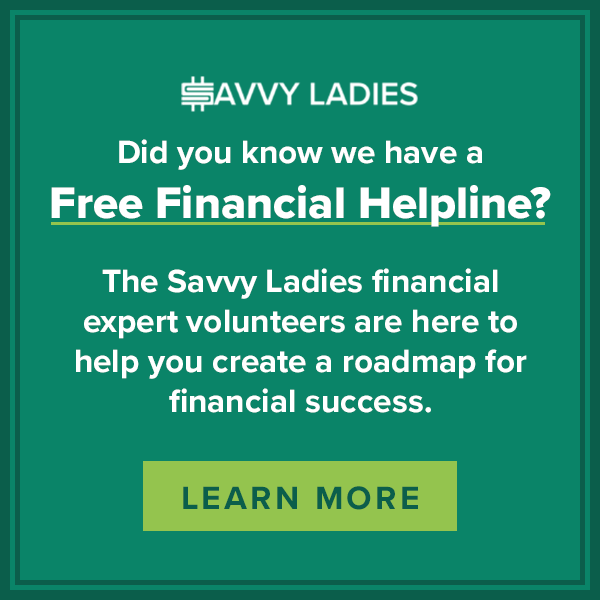By: Jill Beirne Davi
Since paying off $30,000 six years ago, I still use credit sparingly, and I didn’t take out any loans to fund the start-up of my business. Instead, I created a separate savings account called “Investments” to use as working capital for the business. I used that money to educate myself on the basics of starting a consulting business, as well as for things like my website and programs that taught me how to launch and run a business. Overall, my strategy was to pay for a lot of the major upfront costs in cash from my day job.
So I doubled down and focused on attracting more clients, to reach my tipping point faster. But once I stopped treating my consulting like a hobby, I got nervous. I had trouble promoting my services beyond word-of-mouth referrals, and I was afraid to follow up with people, breaking into a sweat when discussing my fees. But I knew I had to conquer those fears if I wanted to work for myself, so I hired a coach of my own to help me build those skills.
To attract clients, I worked around the clock. I hustled, but it was exciting! I woke up about an hour earlier than I had to every morning, and by 7 a.m. I was at my computer with my green tea, either writing posts on my blog or content for my workshops, emailing clients, asking for speaking engagements or studying up on how to run a business. I even took 8 a.m. client calls before showering, and put in a full day of work at my corporate job! I’d teach workshops, and speak or meet with clients on nights and weekends.
After eight months of really focusing on building my practice, though, it became clear that I had to choose. I essentially had two full-time, demanding jobs, and I was burning out. Clients were reaching out, but I didn’t have the time to take them on. I simply didn’t have enough energy to ride two bikes any longer. It was decision time.
My Last Day at My “Real” Job
I crunched the numbers to see if I was ready. Overall, I was running a pretty lean machine. Most of my work was done remotely out of our home office, so I didn’t have to worry about permanent office space. As for health insurance, my husband and I talked about private insurance, but it made the most sense for me to be covered under his plan. I agreed to pay the difference coming out every month. I also applied for professional liability insurance, which can be paid in a lump sum annually. And I calculated how much I would need to put aside every month for retirement. Since I was cutting back, the contribution would be smaller than I contributed in the past at first but would grow over time.
The day I left corporate, I was definitely excited but sad. It was hard to leave a job that I’d called home for six years. When my coworkers asked if I was taking time off, I laughed. “Time off?” I said. “No way. I have a full schedule next week!”
It was definitely a rush to open my laptop that first self-employed Monday morning to a full schedule and no boss. I wrote my next blog posts, prepared for a radio interview later in the week, and had three client calls and a consultation with someone who wanted to hire me.
Financially, self-employment isn’t as drastic of a change as I once thought it might be. The hardest part is creating a system to manage my cash flow so that I can forecast what I’m making every month. I use Excel to plan out incoming client payments and outgoing expenses every month (including what I pay myself). That way I can see all in one place what I need to earn each month. Once I reach that number for one month, any extra carries into the next month. I still pay the same bills I was paying when I was working full time, including the phone, cable, utilities, groceries, parking and part of the mortgage.
What has changed quite a bit is my “fun money” fund, meaning my allowance for personal expenses, like getting a haircut or buying clothes. For now, it’s half of what it used to be, which means I really have to watch what I’m spending more closely than before I left. But I’m at peace with making sacrifices until my income is more consistent. As long as I can get my nails done every now and again, I’m good for now while my practice grows. I expect to be profitable by April of next year.
The biggest challenge for me now that I’m self-employed is keeping my confidence up during the natural business ebbs and flows, like during the summer months when people are away on vacation and the phone never seems to ring. I’ve found that when self-doubt creeps in, it helps to reach out to other self-employed friends, or my amazing husband, and ask for a kind ear to listen.
So far, it’s been a joy, and I don’t see myself going back to corporate any time soon. The flexibility to create my day and really make a difference make the financial ups and downs completely worth it.
This article originally appeared on https://www.forbes.com/sites/learnvest/2013/10/07/my-self-employment-success-story-how-i-quit-corporate-to-work-for-myself/#43caa0b63bee

Jill Beirne Davi is the founder of Abundant Finances, a service that helps you get yourself out of debt and start amassing abundant savings in record time (without deprivation or eating cat food for dinner). For more helpful money strategies to turn your finances around, visit abundantfinances.com.



